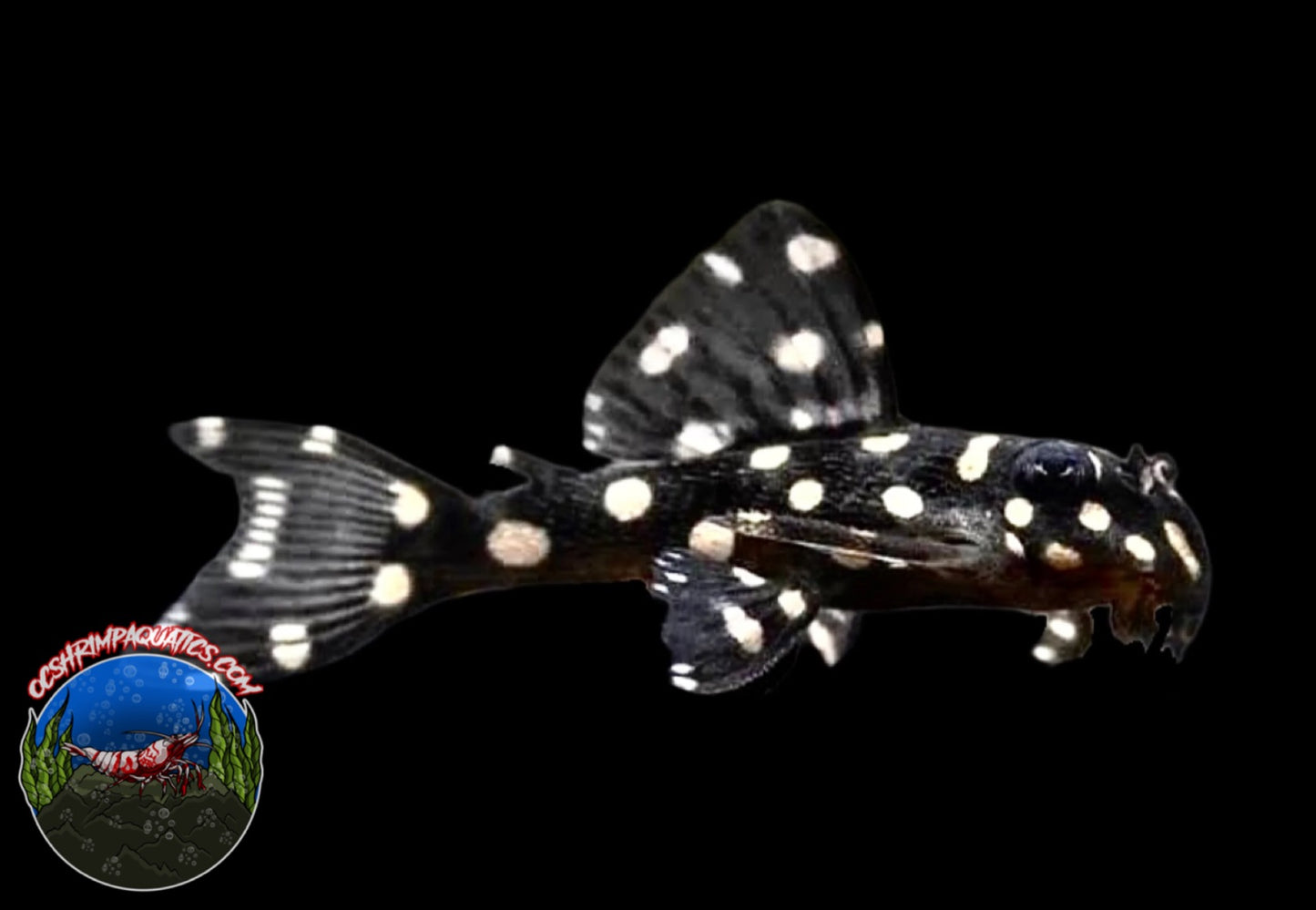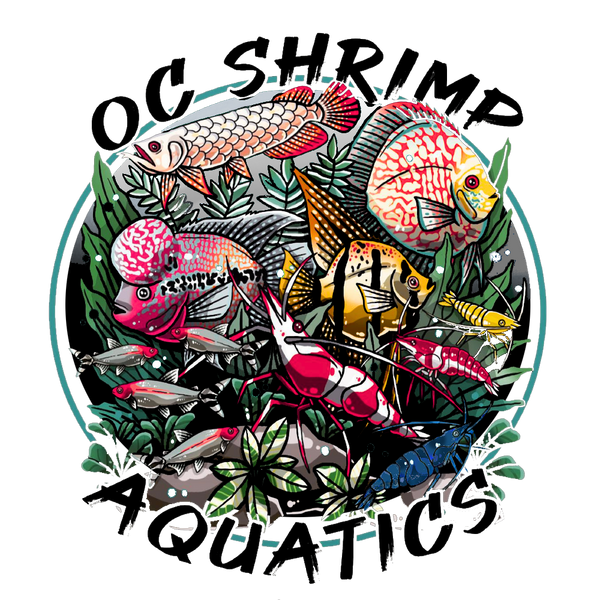OC SHRIMP AQUATIC
L 471 - WHITE SPOTTED DWARF
L 471 - WHITE SPOTTED DWARF
Couldn't load pickup availability
Share
The White Spotted Dwarf Pleco (also known as the Leporacanthicus joselimai or Leporacanthicus spp. depending on the specific variant) is a charming and visually striking species known for its unique pattern of white spots on a dark background. Here's a comprehensive guide to caring for this fascinating fish:
Tank Setup
-
Tank Size: White Spotted Dwarf Plecos, despite their name, can grow up to about 6-8 inches (15-20 cm) in length. A tank of at least 30-40 gallons is recommended to provide them with ample space.
-
Tank Environment: They appreciate a well-structured environment with plenty of hiding spots. Incorporate driftwood, caves, and rocks to mimic their natural habitat. Driftwood is particularly important as it helps with their digestive health and provides a natural environment.
-
Substrate: Use a soft substrate like sand or fine gravel. This helps protect their barbels and ensures a more comfortable environment.
Water Conditions
-
Temperature: Maintain a stable water temperature between 74-82°F (23-28°C). A reliable heater will help keep the temperature consistent.
-
pH Level: They thrive in slightly acidic to neutral water. Aim for a pH range between 6.5 and 7.5.
-
Water Hardness: Soft to moderately hard water is ideal, with a hardness range of 2-15 dGH.
-
Filtration: A high-quality filtration system is important to keep the water clean and well-oxygenated. Regular water changes (about 25-30% weekly) are also necessary to maintain good water quality.
Diet
-
Diet: White Spotted Dwarf Plecos are primarily herbivores. Their diet should consist of high-quality algae wafers, fresh vegetables (such as zucchini, cucumber, and spinach), and driftwood. They also appreciate occasional high-protein foods like bloodworms or brine shrimp.
-
Feeding: Feed them once or twice a day. Offer only as much food as they can eat within a few hours to avoid overfeeding and water pollution.

Order and get 300 reward points
Earn points by signing up for our rewards program

